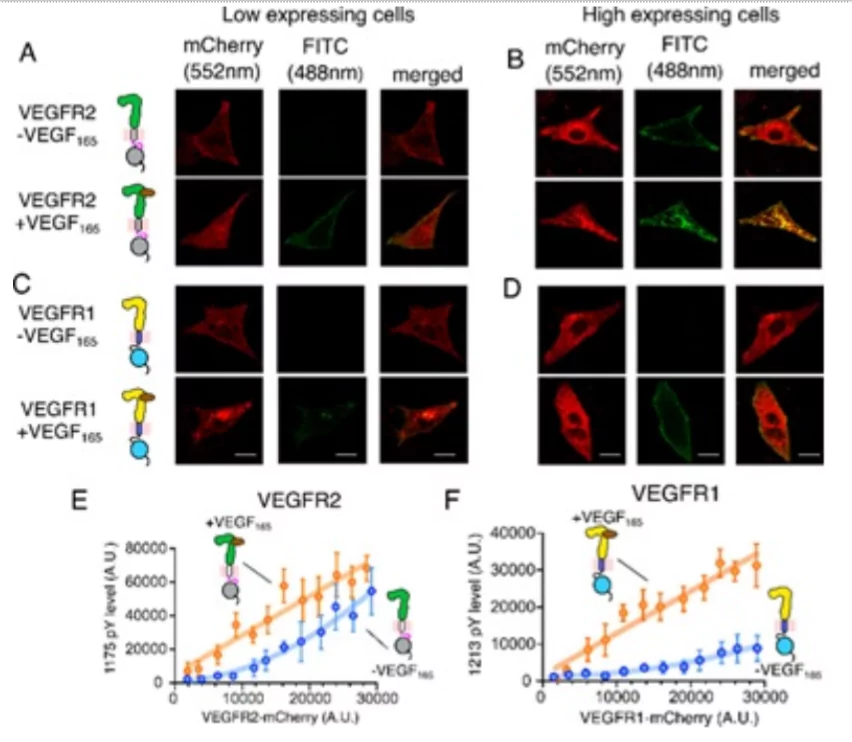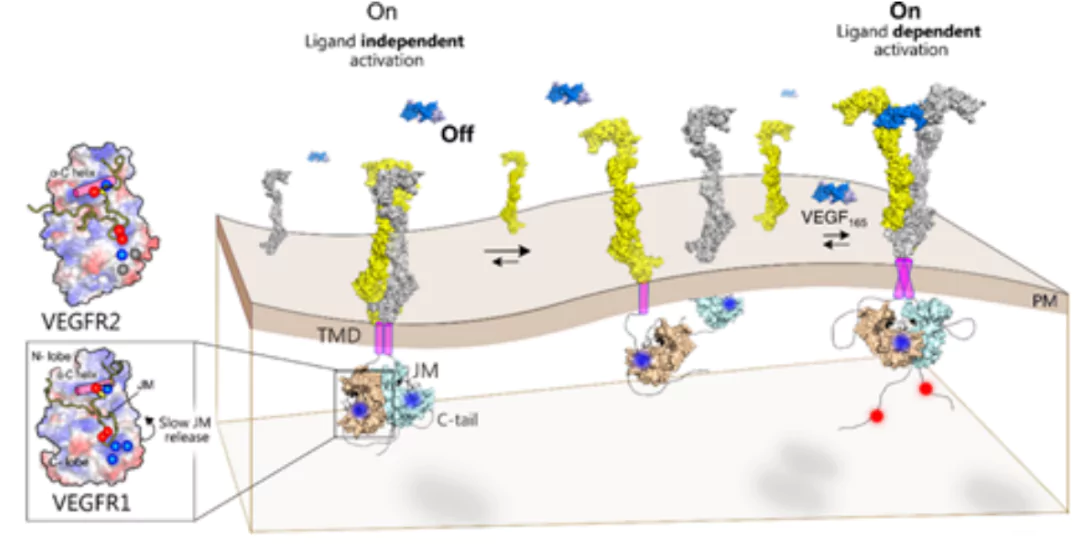Recently, Researchers at the Indian Institute of Science Education and Research (IISER), Kolkata, investigated a Receptor Tyrosine Kinases (RTK) called Vascular Endothelial Growth Factor Receptor (VEGFR).
- They found that a molecular mechanism by which a cell surface receptor which is a part of a family of enzymes that bind to growth factors helps prevent cancer.
- This enzyme VEGFR1 plays a crucial role in regulating cell growth, differentiation, survival, metabolism, and migration.
About Vascular Endothelial Growth Factor Receptor (VEGF)\
- The VEGFR family of receptors is the key regulator of the process of generating new blood vessels.
- This process is essential for functions like embryonic development, wound healing, tissue regeneration, and tumor formation.
- Various malignant and non-malignant diseases can be treated by targeting VEGFRs.
Enroll now for UPSC Online Course
Cell-Surface Receptors
- These receptors are also known as transmembrane receptors.
- These proteins are found on the surface of cells and span the plasma membrane.
- They bind to ligands that cannot pass through the plasma membrane by themselves.
- These are often hydrophilic ligands or ones too large to make it through.
|
Highlight Of The Research
- Two members of family VEGFR 1 and VEGFR 2 behaved quite differently.
Receptor Tyrosine Kinases (RTK)
- Cell surface receptors like Receptor Tyrosine Kinases (RTK) are crucial for converting extracellular signals (from chemical cues like growth factors, generally referred to as ligands) to tightly regulated cellular response.
- Ligand binding to extracellular receptors activates intracellular coupled enzymes (tyrosine kinases).
- The activated enzyme, in turn, adds a phosphate group to several tyrosine molecules that function as an adaptor for assembling a signalling complex.
- The formation of the signalling complex regulates diverse cellular functions like cell growth, development, and host immune response.
- Spontaneous activation of RTKs, in the absence of ligands, is often linked to multiple human pathologies like cancers, diabetes, and autoimmune disorders.
|
-
- While VEGFR 2, the primary receptor regulating process of formation of new blood vessels, could be spontaneously activated, without its ligand, the other member of the family VEGFR 1 cannot be spontaneously activated even when overexpressed in cells.
- It camouflages as a dead enzyme VEGFR1 and binds with ten-fold higher affinity to its ligand VEGF-A than VEGFR2.
- This ligand binding induces a transient kinase (speeding up chemical reactions in the body by an enzyme) activation.

- Activation of VEGFR1: It has been found to lead to cancer-associated pain, tumor cell survival in breast cancer, and migration of human colorectal cancer cells.
- Unique ionic latch, present only in VEGFR1: It keeps kinase autoinhibited in the basal state.
- The ionic latch hooks the juxtamembrane segment onto the kinase domain and stabilizes the autoinhibited conformation of VEGFR1.
- Open New Avenues For Developing Therapeutic Interventions Against Pathological Conditions: The small molecules targeting the autoinhibited state will have a higher potential for treating cancers like human colorectal carcinoma and renal cancer, where VEGFR1 is overexpressed.
Check Out UPSC CSE Books From PW Store

To get PDF version, Please click on "Print PDF" button.


